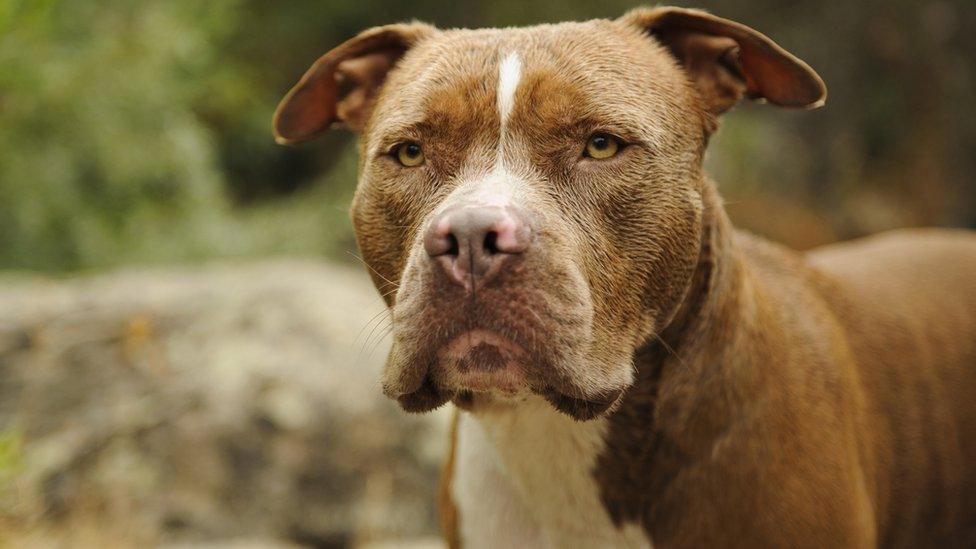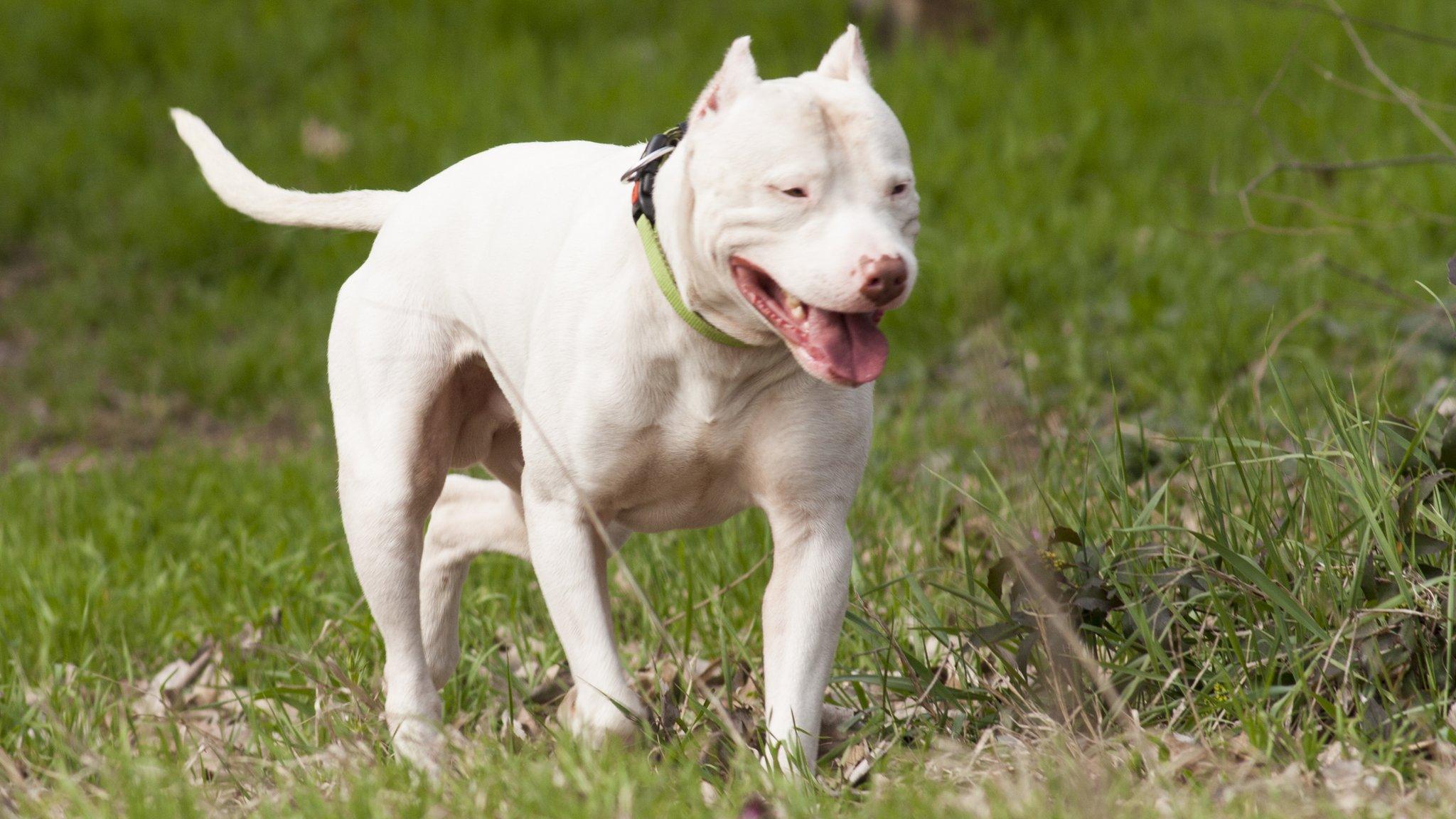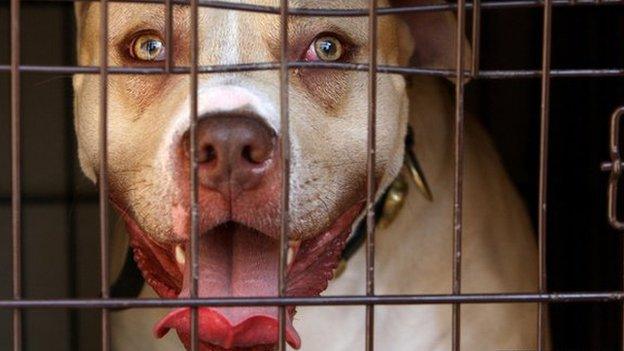Police seize 5,000 'dangerous dogs' over three years
- Published
Kerry Stevens was attacked by a pitbull when she visited a stranger's flat
Almost 5,000 dogs suspected of being banned breeds have been seized by police in England and Wales over the past three years.
The RSPCA wants the Dangerous Dogs Act to be changed so dogs are banned on the basis of behaviour not breed.
The government said the ban on certain breeds was "crucial", but said any dog can become dangerous with bad owners.
Breeds banned under the 1991 act include pitbull terriers, Japanese tosas and Argentine mastiffs.
The figures were released to BBC South East following a series of Freedom of Information requests.
It comes as the Metropolitan Police prepares to put down 300 illegal dogs seized from owners this year.
However, West Yorkshire Police has criticised the law, saying it was not "fair or clear".
Samantha Gaines, from the RSPCA, said the assessment process for banned breeds was hugely problematic as it is based on appearance, not genetic heritage.
"It does mean that any dog - regardless of its heritage can be [classed as a] pitbull terrier if its appearance is similar enough," she explained.
"There is no robust evidence which shows pitbull terriers are any more likely to show aggression than any other breed of dog."
This was echoed by Supt Pat Casserley, from West Yorkshire Police, who said: "This piece of legislation - I don't think it is particular fair or clear.
"There's an expectation that suddenly police officers will be expert at identify dog genetics and I don't think we are".
However Kerry Stevens, from Eastbourne, who was attacked 18 months ago, said all pitbull type dogs should be banned.
She said: "I don't trust them at all, the damage done to me could've killed a toddler."

Kerry Stevens, who suffered serious leg injuries when she was attacked by a dog, said she believes the ban on pitbulls should remain
The attack happened when she went to drop off an item she had sold to a stranger online.
"I thought it was friendly and went to stroke it - basically it bit and bit, and bit around the top of my leg," she said.
"It then pushed me to the ground and then I felt it lock its jaws. I knew then I was in trouble.
"It has made my leg look deformed and it's something I'll never be able to get back again."
Following its seizure, the dog was destroyed by a vet.
Since 1997, some dogs can be exempt from the ban if a court deems the animal is not a danger to the public.
Samantha Holden's dog Bud was nearly destroyed after it was identified as a pitbull by Kent Police last year.
Ms Holden, who believed the dog was a Staffordshire bull terrier, said: "We never had any concerns [over the dog's behaviour].
"It went to court... and we won him back."
However, she said she has to comply with strict rules, including muzzling him at all times in public.
"As long as I stick to the rules everything should be fine," she said.

Index of Exempted Dogs (IED)

If a dog is banned but the court thinks it is not a danger to the public, it may put it on the IED enabling its owner to keep it.
That dog must be:
Neutered
Microchipped
Kept on a lead and muzzled at all times when in public
Kept in a secure place so it cannot escape
Source: www.gov.uk

A spokesman from the Department for Environment, Food and Rural Affairs (Defra), said: "Dog attacks can have horrific consequences for victims and families.
"While any dog can become dangerous if it is kept by irresponsible owners in the wrong environment, the prohibition of certain types of dog under the Dangerous Dogs Act is crucial to help us deal with the heightened risk they pose."
Humberside, Merseyside, Lancashire, Northamptonshire and Lincolnshire police forces either provided incomplete data or declined the FoI requests.
- Published17 March 2016

- Published6 September 2015
